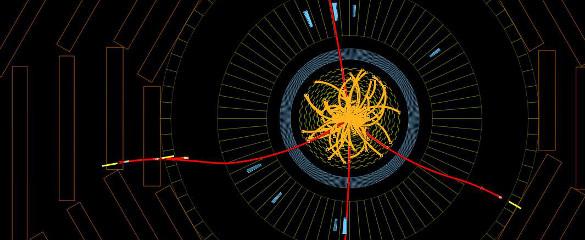The new European strategy for particle physics was adopted by the CERN Council at a meeting hosted by the European Commission in Brussels. This is a follow up to the previous strategy agreed in 2006. ‘It is drawing the main priorities for the next 5 to 6 years,’ explained Rolf Heuer, Director General of CERN.The new strategy is explicit. On the one hand, it is based on the success of the Large Hadron Collider (LHC), which allowed scientists to observe the famous Higgs boson decay last year. Clearly, CERN wants to keep its leading role in this field in the future.On the other hand, the new strategy also goes ‘global’. ‘The scale of the facilities required by particle physics is resulting in the globalisation of the field,’ says the new strategy document. ‘The European strategy takes into account the worldwide particle physics landscape and developments in related fields and should continue to do so.’Two potential projects are mentioned in that global perspective. The construction of an International Linear Collider (ILC) is proposed by the Japanese particle physics community and would include a large European participation. The other project aims at developing a neutrino programme with Japan and the US ‘to pave the way for a substantial European role in future long-baseline experiments’.Strong EU support for SESAMEThe European Commission and CERN have also announced their support for the construction of the ‘Synchrotron-light for Experimental Science and Applications in the Middle East’ project (SESAME). This is a unique joint venture launched in 2003 by countries in the Eastern Mediterranean and Middle East to build a synchrotron facility in Jordan. SESAME has nine members in the region, and several other countries are cooperating in this project with ‘observer’ status. The European Commission will fund the construction of the magnets of this synchrotron, an important piece of equipment which is still missing. EUR 5 million from FP7 funds will be devoted to this project.‘The SESAME project is a unique scientific project for the Middle-East,’ said Robert-Jan Smits, Director General of the European Commission’s Directorate General for Research and Innovation. ‘It is also a project that shows that scientists from different countries in the region can work side by side.’‘This is really an example of a “science for peace” project,’ added Rolf Heuer.SESAME was established under the auspices of the United Nations Educational, Scientific and Cultural Organization and is founded along similar lines to CERN. It is operated as an intergovernmental organisation. The synchrotron should start its scientific activities in 2015.What is a synchrotron?Advanced sources of light (like lasers and synchrotrons) have become prime factors in promoting scientific and technological progress. In recent decades, the extraordinary power of synchrotron light has made it an essential tool for studying matter on scales ranging from biological cells to atoms, using radiation from the infrared to X-rays. It has had an immense impact in fields that include industry, biology, chemistry, environmental science, geology, medicine and physics. For example, exhaust catalysers for cars have been designed with the help of the analytical capabilities of synchrotrons and practically all molecular structure definitions for pharmaceutical compounds are made by synchrotrons.
This article was originally published in Horizon, the EU Research and Innovation magazine.
Add to favorites:
Share:
Listing Description
Video
Documents
No documents available.
Ask KETMarket to make a contact
Connect with the Listing Owner!
💬 Please log in now to askKETMarket to make a contact. Not a member yet? Sign up for free and start connecting today!
Video
Related Funding and Finance Opportunities
Unlock Exclusive Funding Opportunities!
🔑 Get instant access to tailored funding opportunities that perfectly match your needs. This powerful feature is exclusively available to our premium members—helping you save time, stay ahead of the competition, and secure the right funding faster.
Upgrade to Premium now and never miss an important opportunity again! Already a premium member? Log in here to explore your matches.
Related Innovation Offers
Discover Tailored Innovation Offers!
🚀 Gain access to technology solutions that match your specific needs and interests—carefully selected to support your innovation goals. These offers are exclusively available to our premium members, helping you identify relevant technologies faster and start the right conversations with potential partners.
Upgrade to Premium now and explore your personalized technology matches today! Already a premium member? Log in here to view your tailored offers.
Related Knowledgeable Resources
Discover More with Premium: Related Knowledge Resources
🔒 You’re missing out on expert-curated knowledge specifically matched to this topic. As a Premium member, you gain exclusive access to in-depth articles, guides, and insights that help you make smarter decisions, faster.
Whether you’re preparing a funding proposal, researching a new market, or just need reliable information—our Premium knowledge matches save you hours of research and point you directly to what matters.
Upgrade to Premium now and instantly unlock relevant knowledge tailored to your needs! Already a member? Log in here to view your personalized content.

